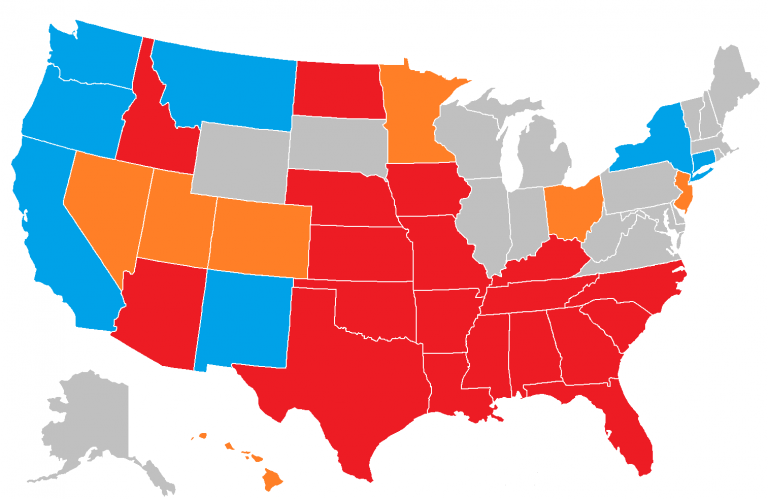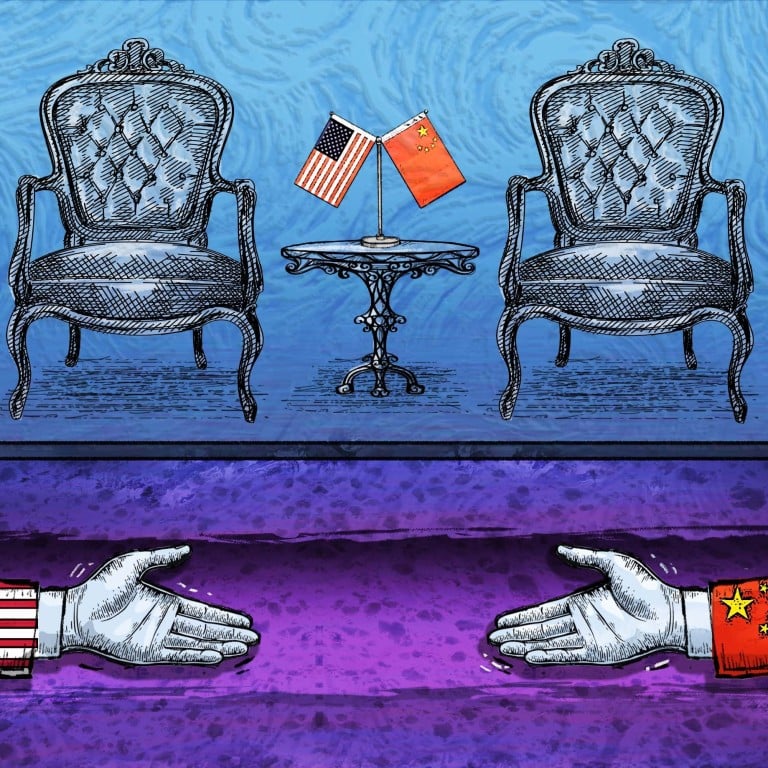Sanctuary Cities And States To Be Listed Nationwide: Trump's Order

Table of Contents
What are Sanctuary Cities and States?
Definition and Legal Basis
Sanctuary jurisdictions are cities, counties, or states that have implemented policies limiting their cooperation with federal immigration authorities, specifically Immigration and Customs Enforcement (ICE). These policies often restrict local law enforcement from inquiring about immigration status during routine encounters or from holding individuals solely based on ICE detainers. Crucially, there is no single, uniform legal definition of a "sanctuary city" or "sanctuary state," leading to varying interpretations and implementation across different jurisdictions. This lack of a concrete legal definition has fueled much of the controversy surrounding these policies.
Rationale behind Sanctuary Policies
Proponents of sanctuary policies argue that these measures foster trust between law enforcement and immigrant communities, encouraging crime reporting and ensuring public safety. They contend that focusing local law enforcement resources on serious crimes, rather than immigration enforcement, is a more effective use of limited resources. Further, they emphasize that these policies protect the human rights of immigrants and prevent the separation of families.
- Examples of sanctuary city/state policies: Policies vary, but common examples include limiting the sharing of information with ICE, refusing to honor ICE detainers unless a judicial warrant is present, and providing legal assistance to immigrants facing deportation.
- Potential benefits and drawbacks: Supporters highlight improved community relations and increased crime reporting. Critics argue that sanctuary policies hinder federal immigration enforcement efforts and create unsafe environments.
- Key legislation and court cases: Numerous legal challenges have arisen concerning the legality and constitutionality of sanctuary policies, with varying outcomes in different courts. These cases often hinge on issues of federal preemption and the Tenth Amendment.
Trump's Executive Order and its Provisions
Key Provisions of the Order
Trump's executive order aimed to pressure sanctuary jurisdictions into cooperating with federal immigration authorities. Key provisions included threats to withhold federal funding from non-compliant jurisdictions and increased enforcement actions against undocumented immigrants in these areas. The order also emphasized reporting requirements for local law enforcement agencies. The specific mechanisms for withholding funds and the extent of increased enforcement were left somewhat ambiguous, adding to the legal complexities.
Legal Challenges to the Order
The executive order faced numerous legal challenges from various sanctuary jurisdictions and civil rights organizations. Key arguments centered on the Tenth Amendment, which reserves powers not delegated to the federal government to the states, and due process rights under the Fourteenth Amendment. The legality of withholding federal funding based solely on a jurisdiction's immigration policies became a central point of contention.
- Specific federal funds affected: The order threatened to withhold a range of federal grants, impacting areas such as law enforcement, infrastructure, and community development.
- Key legal arguments: Challenges argued that the order overstepped federal authority, violated due process rights, and created an unconstitutional condition on receiving federal funds.
- Status of ongoing legal battles: The legal challenges yielded mixed results, with some courts upholding certain aspects of the order while others struck down key provisions. The ongoing legal battles continue to shape the landscape of sanctuary policies.
Impact and Consequences of the Order
Effect on Immigration Enforcement
Trump's executive order has significantly altered the dynamic between federal and local immigration enforcement. While the exact impact varies across jurisdictions, increased ICE activity and a greater focus on sanctuary cities have been observed in some areas. This has led to increased deportations in certain regions and heightened tensions between immigrant communities and law enforcement.
Financial Implications for Sanctuary Jurisdictions
The potential financial consequences for sanctuary jurisdictions remain a point of contention. While some jurisdictions have experienced minor funding reductions, others have successfully challenged the legality of the executive order's financial penalties. The long-term financial implications remain uncertain, with the possibility of lawsuits and budget cuts looming over many sanctuary cities and states.
- Statistical data and case studies: Research on the impact of the executive order on specific jurisdictions is ongoing, with varying findings depending on factors such as the specific policies in place and the level of ICE enforcement.
- Economic and social costs: Analysis of these costs indicates that both complying and non-complying jurisdictions face significant economic and social challenges, highlighting the complex trade-offs involved.
- Examples of policy changes: Some cities and states have modified their sanctuary policies in response to the executive order, while others have remained steadfast in their commitment to protecting immigrant communities.
The Future of Sanctuary Cities and States
Ongoing Debates and Policy Changes
The debate surrounding sanctuary jurisdictions continues to evolve, shaped by ongoing legal challenges, shifting political landscapes, and changing public opinion. The long-term effects of Trump's executive order, and the various legal challenges, will continue to influence policy changes at local and state levels for years to come.
Potential Long-Term Effects
The executive order's long-term consequences on immigration policies, community relations, and local governance remain uncertain. It has undoubtedly heightened the political polarization surrounding immigration and fueled debates over the balance of power between federal and local authorities.
- Predictions on future court decisions: Future legal rulings will significantly influence the legality and scope of sanctuary policies.
- Political climate's influence: The political climate will determine the level of support for sanctuary policies at both the federal and state levels.
- Alternative approaches to immigration management: The debate is likely to spur exploration of alternative approaches to managing immigration at the local level, balancing public safety with the rights and needs of immigrant communities.
Conclusion
Trump's executive order targeting sanctuary cities and states has had a profound and multifaceted impact. The legal challenges, financial implications, and evolving political landscape surrounding this issue demonstrate the complexities involved. While some jurisdictions have altered their policies, others remain committed to their sanctuary status. The long-term effects on immigration enforcement, community relations, and the balance of power between federal and local governments will continue to unfold. Stay updated on the evolving situation regarding sanctuary cities and states and learn more about the impact of Trump's executive order on sanctuary jurisdictions nationwide. Understanding the complexities surrounding the nationwide list of sanctuary jurisdictions is crucial in navigating this critical area of immigration policy.

Featured Posts
-
 Kuxius Solid State Power Bank Higher Cost Longer Life
Apr 29, 2025
Kuxius Solid State Power Bank Higher Cost Longer Life
Apr 29, 2025 -
 Luxury Carmakers Face Headwinds In China More Than Just Bmw And Porsche
Apr 29, 2025
Luxury Carmakers Face Headwinds In China More Than Just Bmw And Porsche
Apr 29, 2025 -
 Canadian Election Late Campaign Surge Questions Carneys Front Runner Status
Apr 29, 2025
Canadian Election Late Campaign Surge Questions Carneys Front Runner Status
Apr 29, 2025 -
 Hungarys China Ties Remain Strong Despite Us Pressure
Apr 29, 2025
Hungarys China Ties Remain Strong Despite Us Pressure
Apr 29, 2025 -
 The Zuckerberg Trump Dynamic Implications For Tech And Politics
Apr 29, 2025
The Zuckerberg Trump Dynamic Implications For Tech And Politics
Apr 29, 2025
Latest Posts
-
 You Tubes Senior Surge A Deep Dive Based On Npr Reporting
Apr 29, 2025
You Tubes Senior Surge A Deep Dive Based On Npr Reporting
Apr 29, 2025 -
 Papal Conclave Debate Surrounding Convicted Cardinals Voting Eligibility
Apr 29, 2025
Papal Conclave Debate Surrounding Convicted Cardinals Voting Eligibility
Apr 29, 2025 -
 The Graying Of You Tube Npr Explores The Growing Older Demographic
Apr 29, 2025
The Graying Of You Tube Npr Explores The Growing Older Demographic
Apr 29, 2025 -
 Convicted Cardinal Claims Entitlement To Vote In Next Papal Election
Apr 29, 2025
Convicted Cardinal Claims Entitlement To Vote In Next Papal Election
Apr 29, 2025 -
 Understanding You Tubes Appeal To An Aging Audience An Npr Perspective
Apr 29, 2025
Understanding You Tubes Appeal To An Aging Audience An Npr Perspective
Apr 29, 2025
